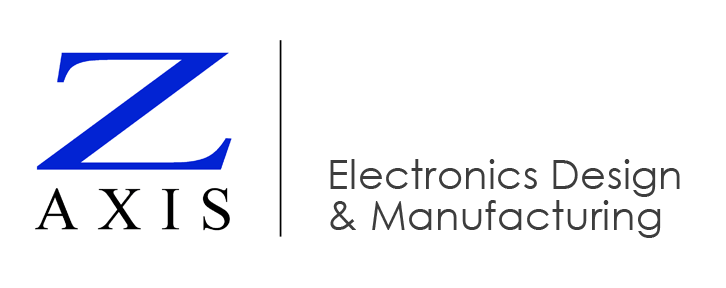This Burn-In of Electronic Products and ESS Video shows how Z-AXIS finds and eliminates early failures of electronic components or PCBs.
In this video we look at the role of burn-in in electronics design and manufacturing.
When do electronic products fail? Watch the Burn-In of Electronic Products and ESS Video.
Before we talk about burn-in, the first thing you need to know about is something called the bathtub curve. This is well known in engineering as the shape of the failure rate over time for most products.
In a batch of products, if one is going to fail, it will most likely fail soon after it’s put into use: the early failure period. Units that make it through that period are more likely to last through their entire expected lifetime, until they start failing because they wore out. So we use burn-in to get units through the early failure period here, at our facility, rather than after they reach customers.
How we do burn-in of PCB assemblies
We design and build burn-in fixtures specific to each product. We connect the units into the fixtures, then move them into the burn-in chambers. The fixtures are plugged in, and the units powered up.
The burn-in chamber condenses the normal early failure period from weeks or months, down to a few days. Cycling the power on and off, accelerates any component failures that will happen due to inrush current and thermal expansion stresses.
Keeping the burn-in chamber at a higher temperature, further accelerates early component failures. The rule of thumb is that the failure rate will double for every ten degrees Celsius. So running the burn-in chamber at 60 degrees Celsius (or 140 degrees Fahrenheit), we expect the products to fail about sixteen times faster than at room temperature.
Environmental Stress Screening (ESS)
A more extensive form of burn-in is ESS, or Environmental Stress Screening. Rather than holding a high temperature, ESS uses repeated temperature cycling, from hot to cold. This causes mechanical stress on the board, including the solder joints, and forces any weak areas to fail in-house. For mission-critical products, such as jet engine controls, we do ESS on 100% of a production run.
Burn in can find a single bad part or solder joint, if one unit fails, or an entire batch of bad products if a lot of units start failing for the same reason. When that happens, our engineers investigate to discover the root cause and work with our component suppliers and manufacturing engineers to resolve the issue.
Long-term strategy for new product designs
Another type of burn-in is long-term burn-in to validate new designs. Here we burn-in a number of the first units of a new product over many years, to simulate the entire expected lifetime of the product – not just the early failure period. This lets us know early on if there may be problems a decade or more down the road, and make necessary design changes now.
Detecting problems and supporting high reliability
So burn in can weed out early failures due to defects, help us detect problems with component suppliers or PCB assembly manufacturing processes, and help us get high long-term reliability from new electronic product designs. In the end it’s all about getting high reliability products to our customers.
Contact us to learn more about our PCB assembly services at our electronic product contract manufacturing center in the USA. More videos on YouTube.
